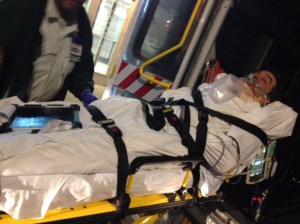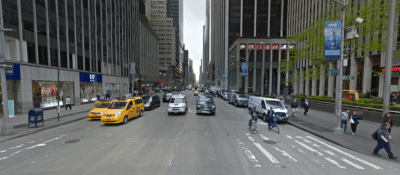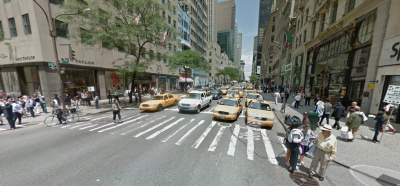This Midtown Block Now Has a Protected Bike Lane *and* a Wider Sidewalk
On Eighth Avenue between 42nd Street and 43rd Street, DOT repurposed a parking lane so pedestrians and cyclists don't have to fight over scraps of street space.

Midtown Manhattan avenues have a problem: The sidewalks aren’t wide enough for all the people walking on them. People have to walk in the roadbed to get where they’re going. On avenues with protected bike lanes, this means people on foot spill over into bikeways, rendering them all but impassable for cyclists.
Now there’s a single Midtown block with a protected bike lane that also has a wider sidewalk. On Eighth Avenue between 42nd and 43rd streets, just north of Port Authority, DOT recently wrapped up a small project that could serve as a template for avenues all over Midtown and other crowded pedestrian areas.
Earlier this summer, the city replaced a parking lane on this block with a nine-foot-wide strip of colored gravel, adding 40 percent more space for people on foot. Planters line the expanded pedestrian space, separating it from the adjacent bikeway.
In the last few days, DOT has added inexpensive bollards and low-profile barriers to separate the bike lane from motor vehicle traffic, giving some heft to what had been a painted buffer.
Put it all together, and it’s a promising approach to retrofitting Midtown blocks that have protected bike lanes but not enough room for pedestrians, as well as streets that need more room for both walking and biking. Repurposing a few lanes from parking and car traffic is all it would take to give the crowded Midtown pedestrian network some breathing room and create a more cohesive bike network in the densest part of the city.


